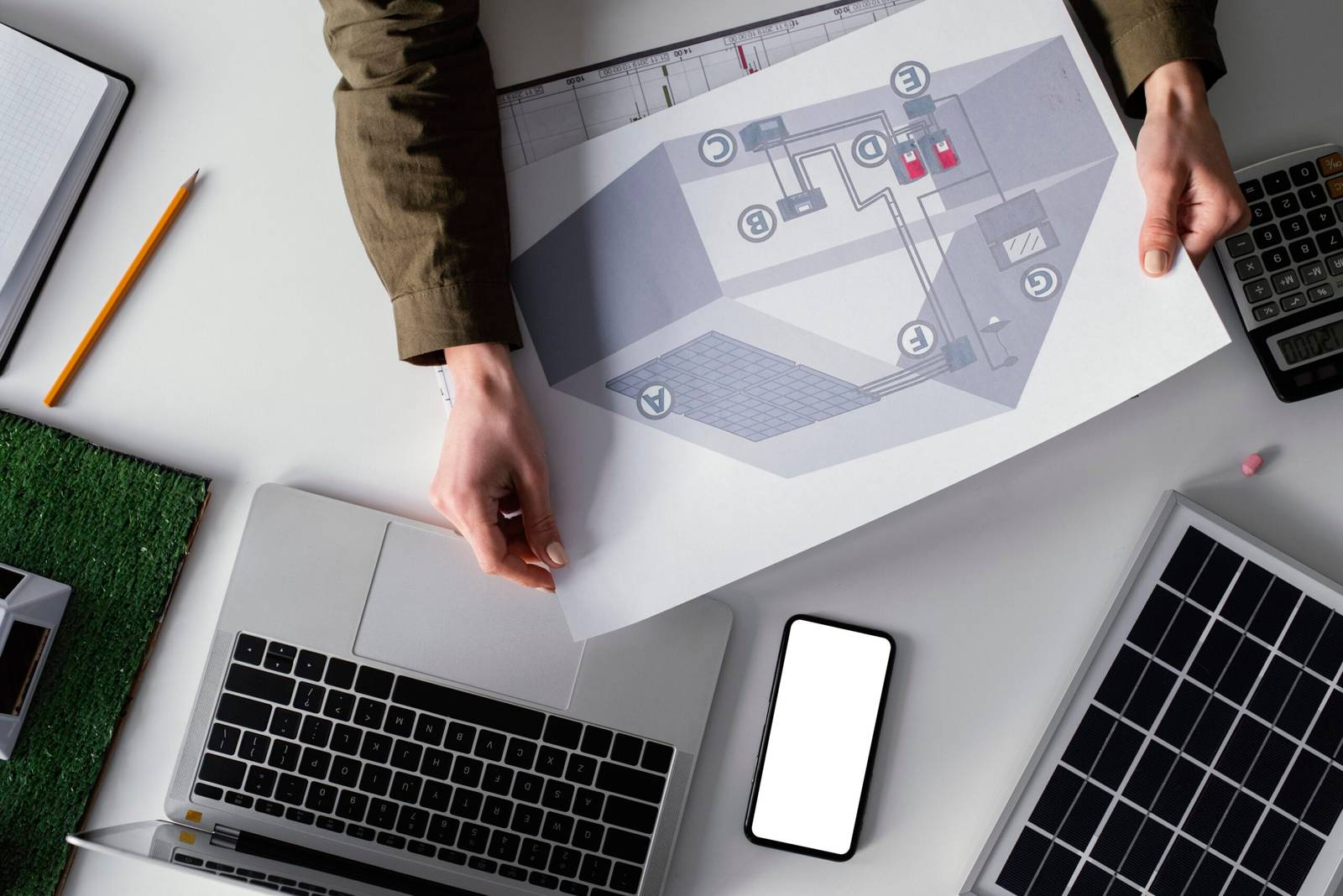Tech in Architecture: Sustainable and Smart Design

by Web Digital
The fusion of tech and architecture is ushering in a new era of sustainable and Tech in Architecture. This article explores the intersection of technology and architecture, delving into how innovations in Tech in Architecture, construction methods, and smart technologies are shaping the future of sustainable and intelligent built environments.
1. Sustainable Materials and Construction:
a. Innovative Materials:
Advancements in sustainable materials are redefining the architectural landscape. From recycled and reclaimed Tech in Architecture to bio-based composites, architects are incorporating eco-friendly options that reduce environmental impact.
b. 3D Printing in Construction:
3D printing technology is revolutionizing construction processes. Printing structures layer by layer not only minimizes material waste but also allows for intricate and customized designs, optimizing resource utilization.
2. Energy-Efficient Design:
a. Passive Design Strategies:
Architects are integrating passive design strategies that leverage natural elements for temperature regulation and lighting. Techniques such as orientation, shading, and natural ventilation contribute to energy efficiency.
b. Solar Technologies:
Incorporating solar technologies like photovoltaic panels and solar glass transforms buildings into energy generators. Net-zero energy designs and energy-efficient facades are becoming integral components of modern architecture.
3. Smart Building Systems:
a. Internet of Things (IoT) Integration:
Smart buildings leverage IoT to enhance efficiency and occupant comfort. IoT-enabled sensors and devices monitor and control various building functions, including lighting, HVAC systems, and security.
b. Building Management Systems (BMS):
BMS platforms centralize control over a building’s systems. This allows for real-time monitoring, predictive maintenance, and optimization of energy consumption, contributing to long-term sustainability.
4. Responsive and Adaptive Architecture:
a. Shape-Shifting Structures:
Innovative materials and technologies enable shape-shifting Tech in Architecture that adapt to environmental conditions. Buildings with responsive facades and dynamic components optimize for sunlight, shade, and ventilation.
b. Adaptive Reuse:
Sustainable design extends beyond new constructions. Adaptive reuse of existing structures reduces demolition waste and preserves the embodied energy in buildings, contributing to sustainable urban development.
5. Green Roofs and Living Walls:
a. Biodiversity and Thermal Insulation:
Green roofs and living walls introduce biodiversity to urban spaces while providing thermal insulation. These features mitigate the urban heat island effect and improve the overall environmental quality of buildings.
b. Rainwater Harvesting:
Sustainable architecture integrates rainwater harvesting systems connected to green roofs. This not only conserves water but also contributes to the irrigation of green spaces within and around the building.
Challenges and Opportunities:
a. Cost Considerations:
While sustainable technologies can have higher upfront costs, long-term benefits, including reduced operational expenses and increased property value, make them economically viable.
b. Interdisciplinary Collaboration:
Effective implementation of tech-driven sustainable design requires collaboration between architects, engineers, and technology specialists to integrate diverse systems seamlessly.
Future Trends:
a. Artificial Intelligence (AI) and Machine Learning:
AI and machine learning will play a vital role in optimizing building performance. Predictive analytics will anticipate maintenance needs, energy consumption patterns, and occupant preferences.
b. Blockchain in Construction:
Blockchain technology will enhance Tech in Architecture and accountability in the construction process. Smart contracts and decentralized project management will streamline workflows and reduce disputes.
c. Virtual and Augmented Reality (VR/AR):
VR and AR technologies will revolutionize the design and visualization processes. Architects will use immersive technologies for virtual walkthroughs, enhancing client understanding and collaboration.
Conclusion:
In conclusion, the integration of technology in architecture is propelling the industry towards sustainable and smart design solutions. From innovative materials and construction techniques to energy-efficient and responsive designs. Technology is reshaping the way we conceive, build, and inhabit our built environments. As challenges are addressed and interdisciplinary collaboration becomes more prevalent, the future holds exciting possibilities. With emerging technologies like AI, blockchain, and immersive experiences. The synergy between tech and architecture will continue to redefine the boundaries of what is possible. The evolution of tech in architecture is not just a technological advancement; it is a commitment to creating spaces that are not only aesthetically pleasing but also environmentally responsible and intelligently responsive to the needs of the occupants and the planet.
Recommended Posts

Exploring the Transformative Influence of Technology in Sports
December 5, 2023

Tech Innovations in Renewable Energy Storage
December 4, 2023

Tech in Entertainment: VR Experiences and Immersive Content
December 2, 2023
